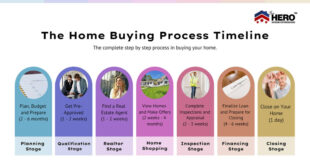Tips for Locking Rates: Secure the Best Interest Rate for Your Loan. Locking in an interest rate can make a significant difference in the total cost of your loan, whether it’s a mortgage, car loan, or personal loan. Understanding how and when to lock a rate is crucial to saving money and reducing financial stress. This comprehensive guide will cover the best tips for locking rates, frequently asked questions, and actionable advice to help you make informed decisions.
What Does Locking a Rate Mean?
Locking a rate means securing a specific interest rate offered by a lender for a defined period. During this lock period, the interest rate remains unchanged, even if market rates fluctuate. This is particularly advantageous in a volatile market, ensuring predictable loan payments and protecting borrowers from unexpected rate hikes.
10 Tips for Locking Rates Effectively
- Monitor Market Trends
- Stay informed about interest rate trends using financial news and online tools. Understanding when rates are low can help you choose the optimal time to lock in.
- Work with a Trusted Lender
- Choose a reputable lender with transparent policies. A good lender will guide you through the locking process and provide competitive rates.
- Understand Lock Periods
- Lock periods typically range from 30 to 60 days. Select a lock period that aligns with your loan processing timeline to avoid penalties.
- Evaluate Lock Extensions
- If your loan process exceeds the lock period, ask your lender about extensions. Some extensions come with additional fees, so understand the costs involved.
- Negotiate the Lock Fee
- Many lenders charge a fee for locking in a rate. Compare lock fees across lenders and negotiate where possible to save money.
- Consider a Float-Down Option
- A float-down option allows you to lock in a rate while benefiting from a potential decrease in rates. This can be a valuable feature in a declining market.
- Time Your Lock Strategically
- Avoid locking rates during periods of market instability, such as before major Federal Reserve announcements. These events can cause rate spikes.
- Get Pre-Approved
- Pre-approval strengthens your position with lenders and often gives you access to better rate lock options.
- Review the Fine Print
- Understand all terms and conditions of your rate lock agreement, including penalties for changes or cancellations.
- Act Quickly
- When rates drop to a desirable level, lock in promptly. Delaying could mean missing out on favorable rates.
10 Frequently Asked Questions (FAQs) About Locking Rates
- What is the best time to lock a rate?
- The best time is when rates are historically low or after consulting market forecasts.
- How long can I lock in an interest rate?
- Most lenders offer lock periods between 30 to 60 days, but some extend up to 120 days for a higher fee.
- Can I switch lenders after locking a rate?
- Yes, but you may lose your lock and have to pay additional fees.
- What happens if rates drop after I lock in?
- Without a float-down option, you’ll keep your locked rate. Consider lenders offering this feature.
- Are rate locks free?
- Some lenders offer free locks, while others charge fees based on the loan size and lock period.
- Can I lock a rate without a property?
- Typically, you need a specific property for mortgage rate locks, but some lenders may allow a lock with pre-approval.
- What if my loan doesn’t close within the lock period?
- You may need to pay for a lock extension or risk losing the locked rate.
- Does locking a rate guarantee loan approval?
- No, approval depends on your creditworthiness and other factors.
- What is a float-down option, and how does it work?
- It allows you to benefit from lower rates after locking in, typically for an additional fee.
- Can I cancel a rate lock?
- Yes, but cancellation may incur fees or other penalties depending on your lender.
Conclusion
Locking in an interest rate is an essential step in managing your loan effectively. By understanding market trends, working with reliable lenders, and timing your rate lock strategically, you can secure the best rates and reduce financial uncertainties. Use the tips and FAQs outlined above to confidently navigate the rate locking process.
When done correctly, locking a rate can save you thousands of dollars over the life of your loan. Always review your options carefully and seek professional advice if needed. By taking these proactive steps, you’ll ensure a smoother and more cost-effective borrowing experience.
 mortgage.kbk.news
mortgage.kbk.news
